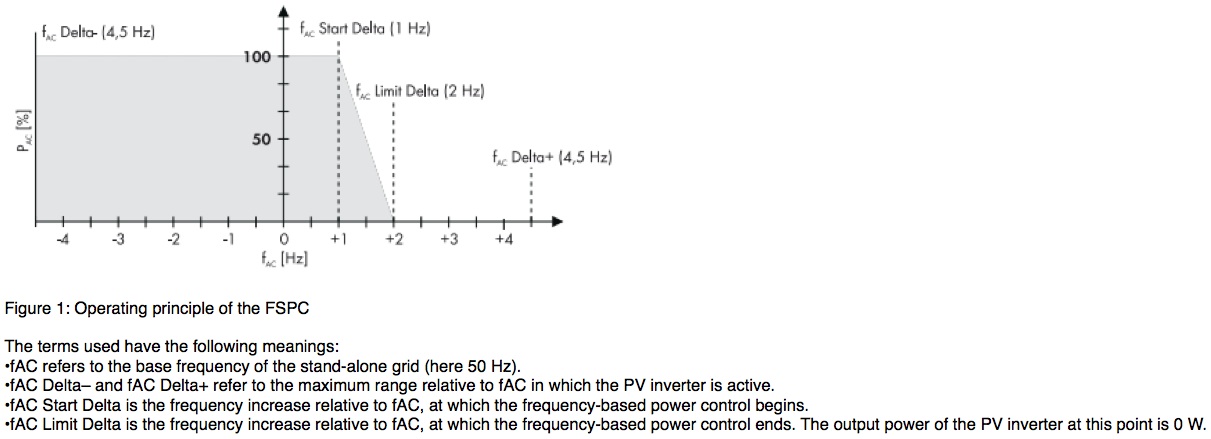
One of the main considerations to AC-coupling design is the ratio between the Grid-Tie inverter (GTI) and the Battery-Based inverter (BBI). Why? There are conditions that might occur when the site’s critical loads are minimal (or non-existent) and the battery bank is fully charged and the sun is out in full shine. In these conditions the GTI wants to output power, but there is nowhere for the power to go. What happens, then? Well, this is dependent on whether communication does or does not exist between the two inverters.
If communication does not exist between the two inverters and this condition is more than a blip in time, the BBI will be overloaded and shut down. In response to the ‘grid’ going down, the GTI inverter will shut down. When this occurs both inverters will have to be restarted manually and you’ll have to do this in the dark.
When communication exists between the two inverters, it is possible for the GTI to vary power output depending on AC loads. SMA, Schneider and SolarEdge all have the ability to communicate in a very cool way - frequency of the AC waveform. SMA defines this as Frequency-Shift Power Control (FSPC), Schneider calls this Active Frequency Shift Power Curtailment (AFSPC) and SolarEdge presents this as Power Control Option → P(f). In all cases, the power output of the GTI varies with the sensed frequency of the waveform provided by the BBI.
Going back to the example of minimal AC loads and full battery charge, the BBI would change its output frequency to cause the GTI to reduce power output. Depending on the magnitude of AC loads, the frequency might be shifted enough to stop all power output of the GTI. However, the frequency shift will not be great enough to knock the GTI completely offline allowing the GTI to ouput power should an AC load quickly return.
Here is an excerpt of FSPC from an SMA Technical Information publication titled Use and Settings fo PV Inverters in Off-Grid Systems (SB-OffGrid-TI-en-41 | Version 4.1).

What does this mean? AC-coupling system design can incorporate various manufacturers of system components, which lends to more options resulting in more solar installs.